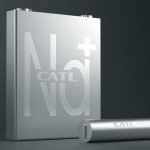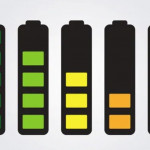Electric car batteries are a crucial component in the development of electric vehicles (EVs) and have seen significant advancements in recent years. For example the volumetric energy density of lithium-ion batteries has increased eightfold since 2008, from around 55 watt-hours/litre to 450 watt-hours/litre in 2020. At the same time the cost of lithium-ion battery packs declined 87% between 2008 and 2021. However, there is still much room for improvement in terms of energy density, price and overall performance.
Lithium ion batteries were first commercialized in the 1990’s and will most likely continue to be with us for some years to come but there are alternatives that are cheaper, more fire resistant and last longer. Lithium iron phosphate (LFP) batteries have been gaining market share especially in China over recent years and Tesla Model 3 Standard Range vehicles made in China are all kitted out with LFP packs. Although the range is slightly less (about 16km), real world range is more when the NCA pack Model 3 is charged to 90%. Although the LFP pack weighs a bit more, it has superior qualities such as the ability to charge to 100% with virtually no degradation, it is safer from the perspective of fire, LFP packs charge faster and have much longer life – up to 1.6 million kilometers.
 Another chemistry that is coming onstream is sodium ion. CATL, the world’s biggest battery manufacturer and BYD have both indicated they will have Sodium-ion (Na-ion) packs ready for cars this year (2023). These packs will be cheaper and much more environmentally friendly. They should prove to be significantly cheaper and although not as energy dense as lithium ion there are indications they are reaching similar energy density to LFP packs.
Another chemistry that is coming onstream is sodium ion. CATL, the world’s biggest battery manufacturer and BYD have both indicated they will have Sodium-ion (Na-ion) packs ready for cars this year (2023). These packs will be cheaper and much more environmentally friendly. They should prove to be significantly cheaper and although not as energy dense as lithium ion there are indications they are reaching similar energy density to LFP packs.
Some of the most promising chemistries under development include lithium-sulfur, lithium-air, and solid-state lithium-ion batteries.
Lithium-sulfur batteries have a theoretical energy density that is more than double that of current lithium-ion batteries. This could potentially lead to electric cars with a much longer range. Lithium-air batteries, on the other hand, have an even higher theoretical energy density, but the technology is still in the early stages of development.
Solid-state lithium-ion batteries is another area of active research. These batteries use a solid electrolyte instead of a liquid one, which could lead to safer, more stable batteries with a longer lifetime. A number of companies have indicated their solid state battery research will lead to commercialization by 2025.
 The research into battery technology is gaining momentum and it is likely that new chemistries for electric cars and energy storage will continue to lower costs and improve energy density. Sodium-sulphur batteries may become viable due to ongoing research and AI has the potential to optimize battery design and management leading to even more efficient and long-lasting batteries.
The research into battery technology is gaining momentum and it is likely that new chemistries for electric cars and energy storage will continue to lower costs and improve energy density. Sodium-sulphur batteries may become viable due to ongoing research and AI has the potential to optimize battery design and management leading to even more efficient and long-lasting batteries.
If the previous ten years is an indicator of the rate of change in energy density and cost, the development of electric car batteries over the next ten years is likely to bring about significant reductions in cost and significant advances in energy density and battery lifetime, which will have a major impact on the electric vehicle industry and other forms of transportation.

Leave A Comment